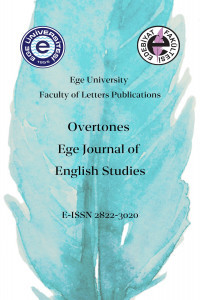Affective Boundaries and Replication in Wuthering Heights
Affective Boundaries and Replication in Wuthering Heights
___
- Ahmed, Sara. The Cultural Politics of Emotion. New York: Routledge, 2004.
- Armstrong, Nancy. “Emily Brontë in and out of her Time”. Emily Brontë’s Wuthering Heights. Ed. Harold Bloom. New York: Infobase Publishing, 2007.
- Brennan, Teresa. The Transmission of Affect. Cornell University Press: Ithaca and London, 2004.
- Brontë, Emily. Wuthering Heights. Penguin Popular Classics: London, 1994.
- Van Ghent, Dorothy. “On Wuthering Heights”. Emily Brontë’s Wuthering Heights. Ed. Harold Bloom. New York: Infobase Publishing, 2007.
- Gilbert, Sandra M. and Susan Gubar. The Madwoman in the Attic: The Woman Writer and the Nineteenth-Century Literary Imagination. New Haven and London: Yale UP, 2000.
- Kermode, Frank. The Classic: Literary Images of Permanence and Change. Cambridge: Harvard University Press, 1983.
- Massumi, Brian. Parables for the Virtual: Movement, Affect, Sensation. Durham & London: Duke University Press, 2002.
- Miller, J. Hillis. “Wuthering Heights: Repetition and the ‘Uncanny’”. The Brontës. Ed. Harold Bloom. New York & Philedelphia: Chelsea House Publishers, 2005.
- Pykett, Lyn. Emily Brontë. Rowman & Littlefield Publishers, 1989.
- Seigworth, Gregory J. and Melissa Greg. “An Inventory of Shimmers”. The Affect Theory Reader. Durham & London: Duke University Press, 2010.
- Tytler, Graeme. "Nelly, I am Heathcliff!": The Problem of "Identification" in Wuthering Heights. The Midwest Quarterly; Winter 2006; 47, 2; p. 167.
- Başlangıç: 2022
- Yayıncı: Ege Üniversitesi
Review: Mass Media/Mass Culture: An Introduction by James R. Wilson and S. Roy Wilson
Hey, Hey, Hey, It’s Fat Albert: Bill Cosby’s Junk-yard Paradise
Intercultural Marriage: Contemporary Expressions of Displacement/Emplacement in British Fiction
Affective Boundaries and Replication in Wuthering Heights
Elusive Idea of Nationhood and Bifurcated Identity in Amitav Ghosh’s The Glass Palace
Recuperating Father(s) and Retracing “I” in Maxine Hong Kingston’s China Men
